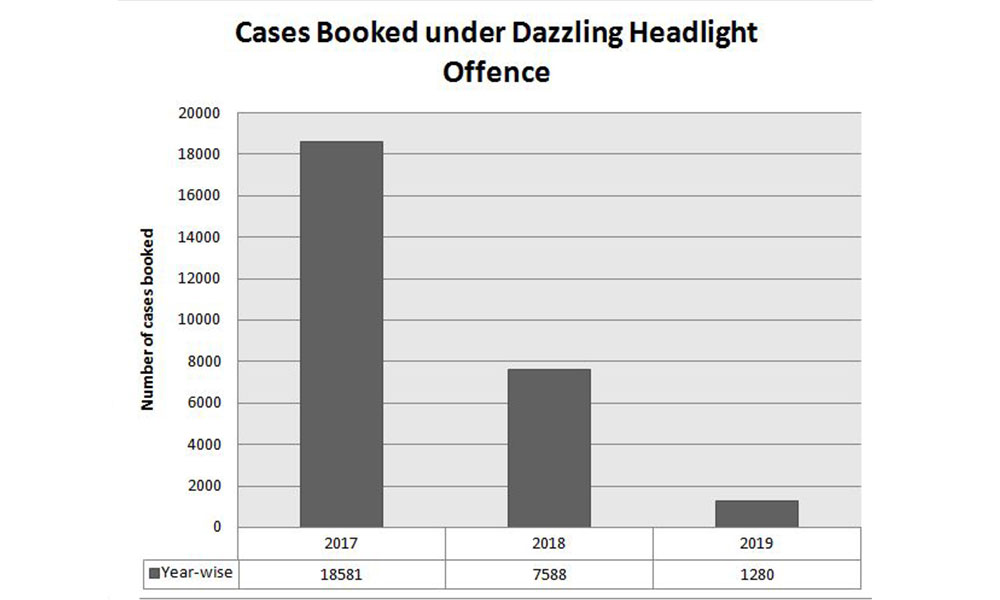Although the number of cases booked under the dazzling headlights’ offence has dropped 14 times since 2017, experts say it is still one of the primary reasons for accidents at night.
By Shalu Chowrasia
Bengaluru: Car-owners continue to use high-beam headlights on city roads, despite it being prohibited under the Motor Vehicles Rules. Experts say these blinding lights dazzle pedestrians and drivers and cause accidents.
“Lesser number of challans does not guarantee that people are not using high beam headlights. Awareness and enforcement are required,” said Chief functionary of Indian Federation of Road Safety, Vinod K. Kanumala.
Lamenting the lack of enforcement and awareness, he stressed the need of accurate data to show the relation between night-time accidents and high-beam headlights.
Use of blinding high-beam headlights is prohibited under Section 177 of the Act. First-offenders are fined Rs. 500, whereas subsequent offenders are fined Rs. 1000.
Kiran, who has been driving on city roads for about 15 years, says that he understands the rules regarding the use of high-beam headlights and tries to abide by the rules.
“Most drivers are unaware of the rules regarding proper use of these headlights. Even if they keep it switched on, they do not intend to cause harm to anyone. At night, most drivers turn on their high-beam headlights to see the road ahead clearly as there could be potholes or dividers,” he said.
High-beam headlights are a significant feature of every car. Motor Vehicles rules say that they are only to be used for long vision on dim-lighted roads outside the city or on highways. On roads inside the city, they are used to negotiate the route or to indicate to the opposite driver that there is a vehicle incoming.
“The traffic policemen are not adequately equipped to check if the high-beam light of a vehicle is actually turned on. At times, even if the light is on low beam, the focus can be high due to technical glitches,” Mr. Kanumala said.
High-beams can be fatal, especially for elderly drivers or for those who suffer from diseases related to the eyes. “Even on highways, these glaring lights should be used with caution. They can completely blind one until the vehicle passes by,” said ophthalmologist Dr. Jaitra Gowdar.
“At night, if I keep the low-beam light on, I am barely able to see 100 metres of the road ahead. If I switch on the high-beam lights at all, it is for my convenience, not to harm anyone or to flout rules,” Kiran added.
A senior official at Traffic Police Headquarters told The Softcopy that the traffic policemen have been conducting awareness drives to inform drivers about the use of high-beam headlights. The number of cases booked under dazzling headlight offence has dropped 14 times in three years.
Rhythm, a student of engineering and a motorist, said that car owners need to abide by the rules. “I have had several near misses because of these blinding lights. Car drivers need to learn basic driving skills.” Mr. Kanumala also stressed the need for driving discipline.
“Often, while walking on roads at night, I have come across cars with high-beam headlights which have blinded me for a few seconds,” says Harish, an IT employee based in Bangalore.
“Our infrastructure and the poor driving skills of citizens, both are to be blamed for the continuing use of high-beam headlights. For optimum lighting and visibility for drivers without dazzling others, dipped beam is the most appropriate. However, drivers still use high-beam headlights for dipping,” he added.




